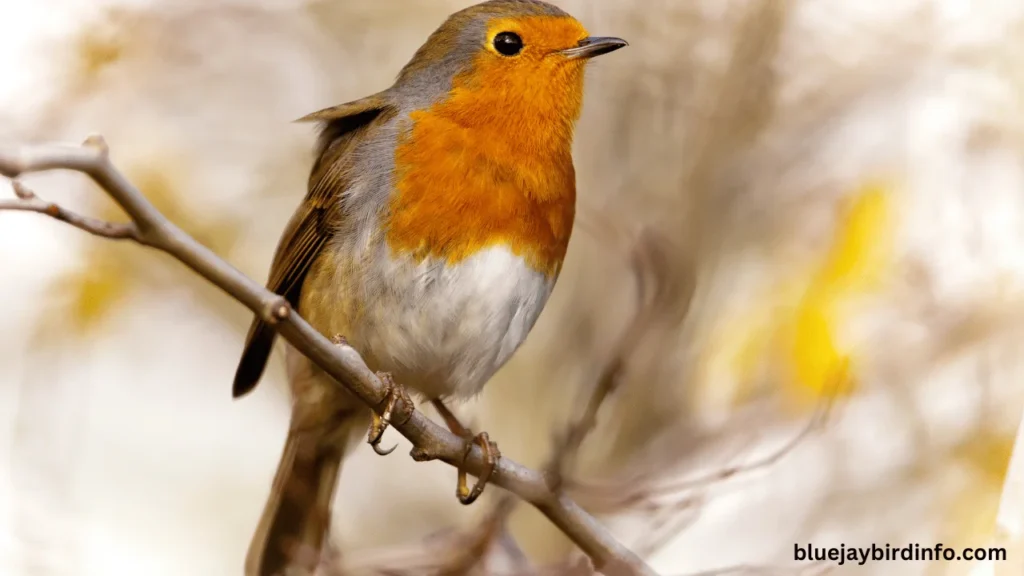Have you ever gazed out your window, spotting a flash of red amongst the greenery, only to be left second-guessing? Was it a Robin, that familiar harbinger of spring with its cheerful song? Or perhaps a Cardinal, a vibrant songster with a regal crest?
These two birds are frequent visitors to backyards and gardens, both donning stunning red plumage. But despite their similar appearance, these feathered friends have distinct personalities and preferences.
Understanding the key differences between Robins and Cardinals can transform your birdwatching experience from a guessing game into a confident identification.
This blog post is your one-stop guide to deciphering the mysteries of the red-breasted birds in your backyard. We’ll delve into the details, exploring their physical characteristics, habitat preferences, and even their unique songs.
y the end, you’ll be a pro at distinguishing a Robin’s cheerful chirp from a Cardinal’s bold melody, and your backyard birdwatching will reach a whole new level!
Contents
Physical Characteristics
Size and Shape: While both Robins and Cardinals are relatively small birds, Cardinals are generally larger and stockier. Robins have a more slender build.
Plumage: Both birds exhibit vibrant red plumage, but there are distinct differences. Male Cardinals have a bright red body with a black mask around their eyes. Female Cardinals are typically a duller brown. Robins, on the other hand, have a reddish-orange breast and a gray back.
Beak Shape: The shape of a bird’s beak often reflects its diet. Cardinals have a strong, conical beak adapted for cracking seeds, while Robins have a more slender beak suited for foraging for insects and berries.
Habitat and Range
Preferred Habitats: Both Robins and Cardinals are common backyard birds, but they have slightly different habitat preferences. Robins are more adaptable and can be found in a variety of habitats, including forests, woodlands, and urban areas. Cardinals, however, prefer wooded areas with dense undergrowth.
Geographic Distribution: The geographic range of Robins is more extensive than that of Cardinals. Robins can be found throughout North America, while Cardinals are primarily found in the eastern and southern parts of the United States.
Behavior and Diet
Feeding Habits: While both birds are omnivorous, their diets differ slightly. Cardinals primarily feed on seeds, fruits, and nuts. Robins, on the other hand, consume a wider variety of food, including insects, worms, and berries.
Mating Behavior: Both Robins and Cardinals are monogamous birds. They build cup-shaped nests in trees or shrubs. However, Cardinals often build more elaborate nests than Robins.
Vocalizations: Both species are known for their beautiful songs. Cardinals have a distinctive, clear song, often described as a whistled tune. Robins, on the other hand, have a more varied song, which can include melodious phrases and sharp, territorial calls.
Cultural Significance
Both Robins and Cardinals hold cultural significance in various societies. In many cultures, they are symbols of good luck, happiness, and the arrival of spring.
In folklore and mythology, both birds have been associated with different meanings. For example, the Cardinal is often seen as a symbol of passion and love, while the Robin is associated with rebirth and new beginnings.
Both birds are popular subjects for birdwatchers and gardeners. Their vibrant plumage and melodious songs make them a delight to observe.
Misconceptions and Identification Tips

A common misconception is that all red birds are Cardinals. However, the presence of a crest on the head is a key distinguishing feature of Cardinals. Robins lack this crest.
To accurately identify a bird, it’s important to pay attention to details such as size, shape, plumage color, and beak shape. Additionally, observing their behavior and listening to their calls can provide valuable clues.
By familiarizing yourself with these key characteristics, you can confidently distinguish between Robins and Cardinals and appreciate the unique beauty of each species.
Conclusion
While both Robins and Cardinals are striking red birds, they exhibit distinct characteristics that set them apart. Understanding these differences can enhance your birdwatching experience and deepen your appreciation for these fascinating creatures.
So, the next time you spot a flash of red in your backyard, take a closer look and see if you can identify the bird accurately!
FAQ’s
While both Robins and Cardinals belong to the order Passeriformes, they are not closely related. They belong to different families: Turdidae (Robins) and Cardinalidae (Cardinals).
Why are male Cardinals red?
The bright red plumage of male Cardinals is a result of a pigment called carotenoid, which is obtained from their diet. The intense color serves as a visual signal to attract females and deter rivals.
Do Robins and Cardinals migrate?
While some Robin species migrate, others are year-round residents. Cardinals, on the other hand, are generally non-migratory.
Can Robins and Cardinals interbreed?
No, Robins and Cardinals belong to different bird families and cannot interbreed.
What is the lifespan of a Robin or Cardinal?
The lifespan of a Robin or Cardinal can vary depending on various factors, including predation, disease, and habitat quality. However, on average, they can live for several years.
How can I attract Robins and Cardinals to my yard?
To attract Robins and Cardinals to your yard, provide a variety of food sources, such as seeds, berries, and suet. You can also plant native plants that provide food and shelter. Additionally, offering a clean water source, like a bird bath, can be enticing.








